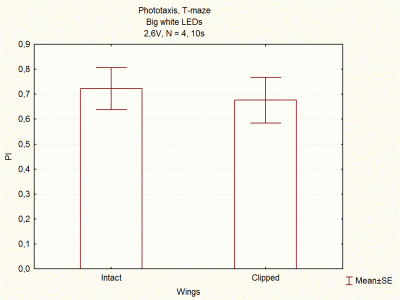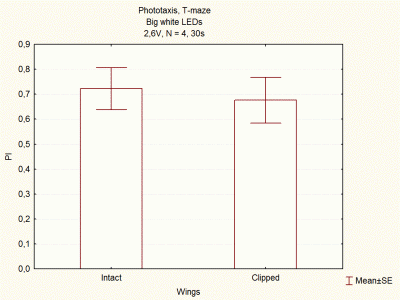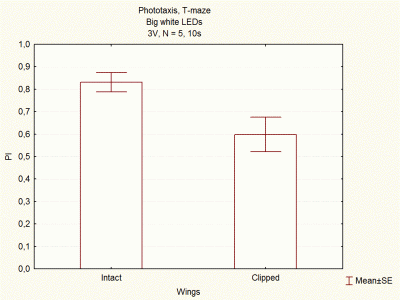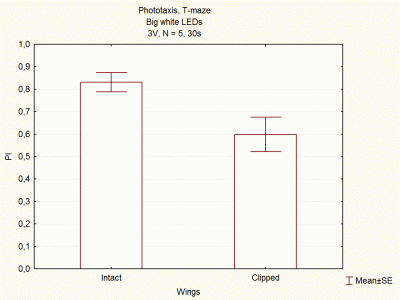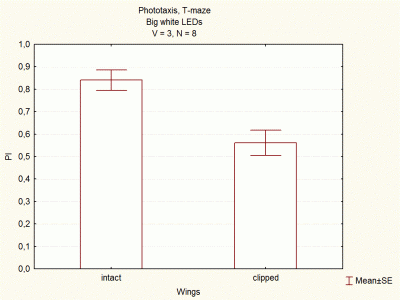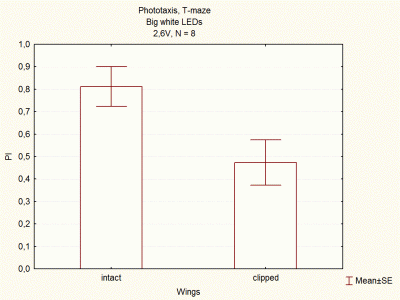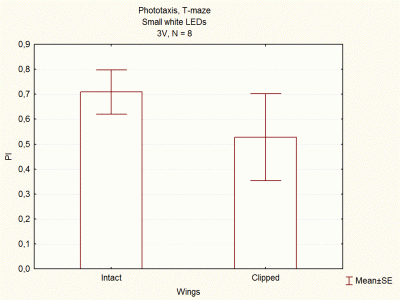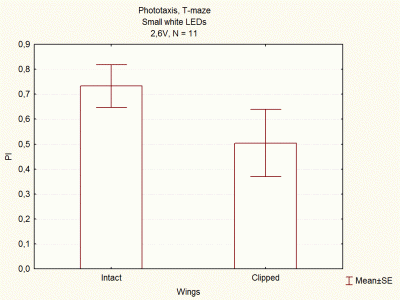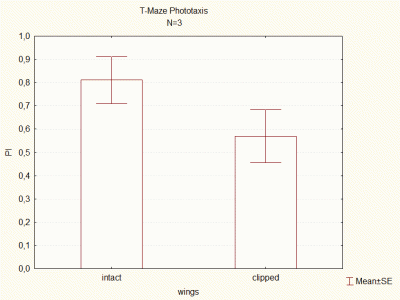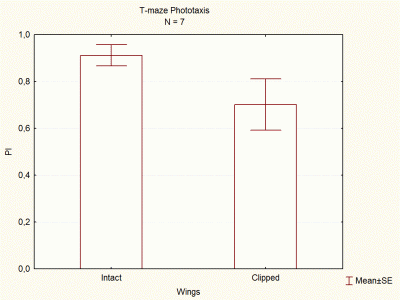New experiments
on Monday, December 10th, 2012 3:01 | by Lidia Castro
I was trying to increase the differences between flies with clipped and intact wings, putting a paper covering the LEDs.
Results are not as good as I expected. The differences are lower than experiments done without this paper between LEDs and flies. I did experiments only with the big white LEDs (the ones which showed better results).
Category: wing clipping | 8 Comments
Comparison between voltages and size of white LEDs
on Wednesday, December 5th, 2012 1:33 | by Lidia Castro
I continued doing experiments with big and small white LEDs, and now I think I have done enough experiments to compare them.
These are the final results, which seem to indicate that big white LEDs using 2,6V are the best ones to continue with the experiments.
Category: wing clipping | No Comments
New phototaxis results
on Thursday, November 29th, 2012 2:04 | by Lidia Castro
I am trying to find which are the best LEDs and voltages to do the phototaxis experiments.
For that, I was doing experiments with big and small white LEDs (the big ones are much more brighter than the other ones), and with two different voltages: 2,6V and 3V.
This are the results that I have obtained:
As we can see in the pictures, the best results are obtained when we use a voltage of 2,6, and for now big LEDs seem to be better than the smaller ones (we find more differences between flies with clipped wings and flies with intact wings).
But the number of experiments I have done are still not enough to make a good comparison between LEDs size and voltage.
Category: wing clipping | No Comments
Experiments with white LEDs
on Wednesday, November 21st, 2012 5:24 | by Lidia Castro
The first picture shows the experimental results obtained with the first white LEDs I have used (using a voltage of 3.0V).
The second one shows the experimental results obtained with the new white LEDs I am using this week (2.6 V).
The first ones are bigger than the second ones, and they are also much more brighter.
We can see in both graphs that there are some differences between flies with intact and clipped wings, being the ones with clipped wings less phototrophic than the others.
For now, graphics do not tell us almost anything about differences between both LEDs.
Category: wing clipping | No Comments
First T-maze experiment
on Tuesday, November 13th, 2012 6:42 | by Lidia Castro
Today, I started the experiment with 3 day-old flies.
We found out that they are responding as we thought they were going to do.
There was a white LED in one side of the T-maze, and darkness on the other side.
I run the experiment for 20 seconds, letting them choose between these two conditions. After counting them, I had these results:
82 flies were in the bright side, and 20 were in the dark side.
Tomorrow we will do the same experiment after cutting flies wings, and also we are going to try different LEDs.
Category: wing clipping | No Comments
